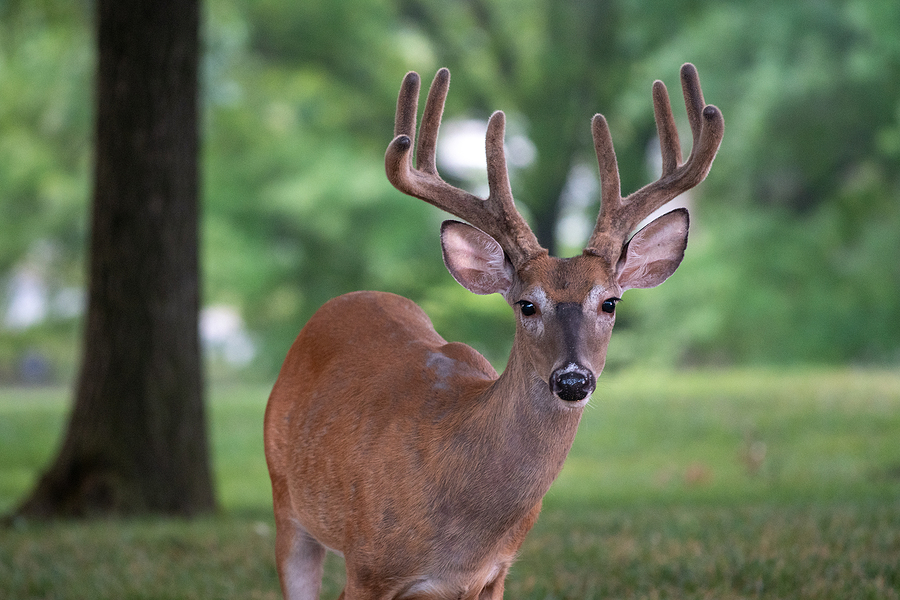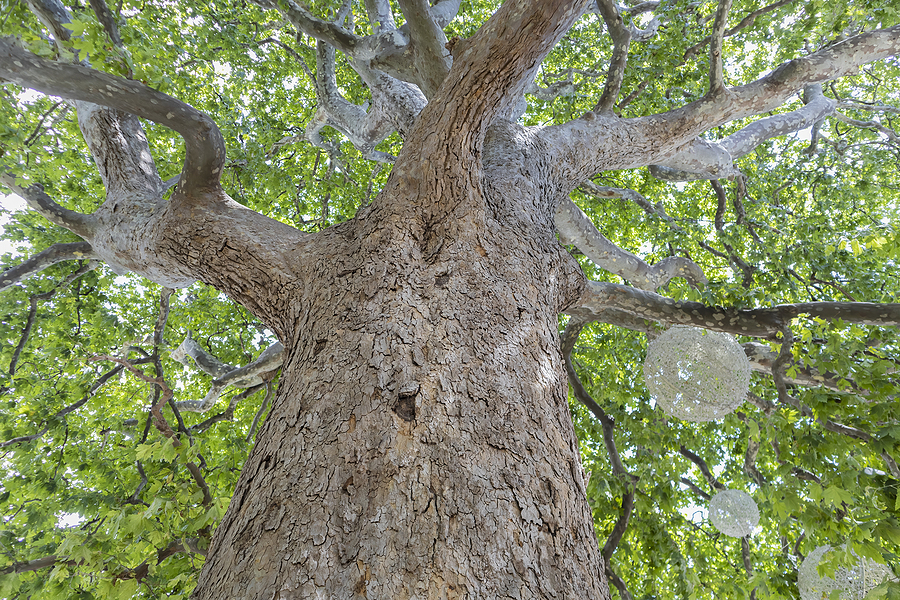It is so exciting to spot a deer or doe in your yard, and even more so when it’s a buck! However, many homeowners who live near wooded areas are beginning to question whether or not deer activity can harm their trees. Aside from grazing, many homeowners ask why bucks rub their antlers on newly planted trees, and if this behavior can injure young trees. These are very good questions, and important information to your overall tree care routine.
Continue reading to learn why bucks are rubbing their antlers on your trees, and how to stop them from causing any damage with this behavior.

How Buck Behavior Impacts Trees in Indiana
Bucks rub their antlers against young trees because they are still flexible. There is a misconception about bucks who rub their antlers on trees. Many people in the past have assumed that it is due to the velvet that initially covers buck antlers. It was believed that this velvet was itchy, and bucks were simply relieving the irritation. But this can’t be true because antlers do not have nerve endings! Research shows that bucks most likely exhibit this behavior for a number of reasons. But the 3 most common include:
☑ To Mark Their Territory
☑ To Practice or Strengthen Neck Muscles for Battle
☑ To Arouse and Attract Fertile Does
Tree Damages Caused By Male Deer
This distinctive buck behavior can harm trees. It can create open wounds in trees and break off bark. This leaves a tree more vulnerable to diseases, infections, and pest infestations. If a tree gets sick, it can quickly decline and die. So, it is necessary to take action because deer will come back to your trees, season after season.
Tree Protection For Nuisance Wildlife Problems
You have a few options to protect your trees from deer interference. You can install a fence around your property, which will inhibit deer from being able to enter your premises. If you are not interested in such a large investment, you can install a perimeter fence just around your trees.
You can make these using sheets of welded wire mesh, or you can purchase manufactured tree barriers or ornamental metal grates on the market. Be sure they are at least 5 to 6 feet tall and reinforced by 8-foot-tall rebar.
The rebar should be pounded into the ground at regular intervals around the perimeter of the tree. If this doesn’t work for you, you can use corrugated plastic drainpipe. Cut it in half, lengthwise, and wrap it around the tree.
Would you like some help with winter tree care this year? Contact Timberland Tree Care at 317-348-0811 for licensed and insured tree service in Indianapolis, Indiana and its surrounding counties. We provide residential and commercial tree work, as well as free estimates and advice.
Related Posts:
4 Environmental Factors That Can Delay or Stop Tree Growth
Top 5 Reasons Your Tree Looks Unhealthy
3 Trending Pest Control Products for Trees and Shrubs

